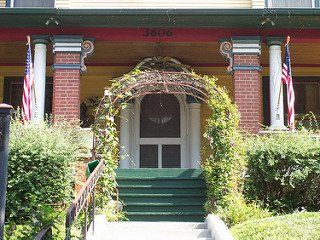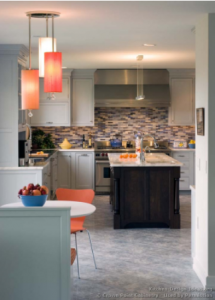BLOG
BLOG
26 Sep, 2019
5 Holiday Hosting Disasters and How to Avoid Them Take a look at the most common things that can go wrong when you have guests and learn how to prevent them.

15 Mar, 2018
GLVAR GENERAL MEMBERSHIP MEETING WITH CAROLYN GOODMAN PROVIDING EXCITING DEVELOPMENTS HAPPENING IN LS VEGAS! FRIDAY, APRIL 20TH AT THE FOUR SEASONS HOTEL 11AM-4:30PM TOM FERRY WILL PROVIDE A TRAINING ON HOW TO GROW YOUR BUSINESS; MAXIMIZE SCHEDULE FOR PRODUCTIVITY; AND TACTICS TO CLOSE MORE SALES! RSVP BY APRIL 16TH VISIT: LASVEGASREALTOR.COM OR CONTACT 702-784-5000 $35 REGISTRATION FEE; HOWEVER UPON CHECKING IN, THAT WILL BE CREDITED TO YOUR GLVAR ACCOUNT!
12 Dec, 2017
4 Simple Tasks to Do in Fall for an Awesome Lawn in Spring Fall is the most crucial time for your lawn. Read
12 Dec, 2017
4 Simple Tasks to Do in Fall for an Awesome Lawn in Spring F all is the most crucial time for your lawn. Real Christmas Trees vs. Fake Christmas Trees: Which are Greener? How do real Christmas trees and fake Christmas trees stack up when it comes to the environment and cost? We’ve got the dirt. Read

02 Oct, 2017
Las Vegas Farmers’ Markets Even here in the desert climate of Las Vegas we have a variety of farmers markets, where locals and tourists alike can pick up a wide variety of farm-fresh produce, baked goods and many other items. Adding to the fun, most of the markets often feature local artists, crafters, culinary artists and free entertainment. Many operate year-round, while a few are seasonal. *Please note that times and days of operation are subject to change. Bruce Trent Park Farmers Market Farm fresh produce provided by certified farmers, producers and growers of the region. Featured in an open-air, festive setting. Wednesdays, 4:00 pm – 8:00 pm 1600 N. Rampart Blvd. (Rampart & Vegas Drive) Las Vegas, NV 89134 (702) 562-2676 Country Fresh Farmers Market Our market hosts dozens of vendors including California and local farmers. Farm fresh produce and some Organic produce. Downtown Henderson in the Water Street Events Plaza Thursdays, 9:00 am – 4:00 pm 240 S. Water St. Henderson, NV 89015 (702) 579-9661 Henderson Pavilion Fridays, 9:00 am – 4:00 pm 200 S. Green Valley Pkwy. Henderson, NV 89012 (702) 579-9661 The District Farmers Market Join us on Main Street at The District at Green Valley Ranch for fresh produce from local farmers. Thursdays, 4:00 pm – 8:00 pm; March – May & September – December 2235 Village Walk Dr. Henderson, NV 89052 (702) 564-8595 Downtown 3rd Farmers Market Our indoor and outdoor market features organic produce, local farms, artisanal foods & free family activities. Fridays, 9:00 am – 3:00 pm 300 N. Casino Center Blvd. Las Vegas, NV 89101 (702) 953-4321 Downtown Summerlin Farmer’s Market The market carries organic, sustainably grown produce from California and Nevada family farms offering the freshest, tastiest, nutritional rich fruits and vegetables. Saturdays, 9:00 am – 2:00 pm under the Pavilion 2025 Festival Plaza Dr. Las Vegas, Nevada 89135 (702) 832-1000 Fresh52 Farmers and Artisan Market fresh52 farmers & artisan market is a lively, friendly, open air market where neighbors and friends come together to celebrate their community. Tivoli Village Saturdays, 9:00 am to 2:00 pm 302 S. Rampart Las Vegas, NV 89145 (702) 900-2552 Sansone Park Place Sundays, 8:30 am to 1:00 pm (closed Easter Sunday) 9480 S. Eastern Ave. Las Vegas, NV 89123 (702) 900-2552 Solista Park at Inspirada Every second and fourth Saturday of the month from 9:00 am to 1:00 pm 2000 Via Firenze Henderson, NV 89052 (702) 900-255 Las Vegas Farmers Market The Las Vegas Farmers Market is a festival type market and features home grown produce, local entertainment, and festive foods. Come enjoy your favorites and discover new foods weekly. Floyd Lamb State Park Saturdays, 10:00 am – 2:00 pm; mid March – mid December 9200 Tule Springs Rd. Las Vegas, NV 89131 (702) 562-2676 Gardens Park in Summerlin Thursdays, 2:00 pm – 6:00 pm; mid December – mid March Thursdays, 4:00 pm – 8:00 pm; mid March – mid December 10401 Gardens Park Drive Las Vegas, NV 89135 (702) 562-2676

28 Sep, 2017
Just another weekend? Not if you take advantage with one or more of these 5 great projects you can easily pull off for under $300. Most of the cost of these DIY weekend projects is in the materials. The labor — that’s you — is free. All you need now are the hours. But, hey, you’ve got two full days — plenty of time to be a superhero weekend warrior and grab some R&R. Project #1: Add a Garden Arbor Entry The setup: Install an eye-catching portal to your garden with a freestanding arbor. It’ll look great at the end of a garden path or framing a grassy area between planting beds. Specs and cost: Garden arbors can be priced up to thousands of dollars, but you can find nice-looking kits in redwood, cedar, and vinyl at your local home improvement or garden center for $200 to $300. Typical sizes are about 7 feet high and 3 to 4 feet wide. You’ll have to assemble the kit yourself. Tools: Screwdriver; cordless drill/driver; hammer; tape measure. Kits come pre-cut and pre-drilled for easy assembly, and usually include screws. If fasteners aren’t included, check the materials list before you leave the store. Time: 3 to 5 hours Project #2: Install a Window Awning The setup: Summer is super, but too much sunlight from south- and west-facing windows can heat up your interiors and make your AC work overtime. Beat that heat and save energy by using an awning to stop harsh sunlight before it enters your house. Specs and cost: Residential awnings come in many sizes and colors. Some are plastic or aluminum, but most are made with weatherproof fabrics. They’re engineered for wind resistance, and some are retractable. A 4-foot-wide awning with a 2.5-foot projection is $150 to $250. Tools: Cordless drill/driver; adjustable wrench; tape measure; level. You can install an awning on any siding surface, but you’ll need a hammer drill to drill holes in brick. To prevent leaks, fill any drilled holes with silicone sealant before you install screws and bolts. Time: 3 to 4 hours {{ include_video how-make-sunbrella-awning-home }} Project #3: Screen Off Your Air Conditioner from View The setup: Air conditioning is great, but air conditioner condensers are ugly. Up your curb appeal quotient by hiding your AC condenser or heat pump unit with a simple screen. Specs and costs: An AC screen is typically three-sided, about 40 inches high, and freestanding — you’ll want to be able to move it easily when it comes time to service your HVAC. For about $100, you can make a screen yourself using weather-resistant cedar or pressure-treated wood to build three frames, and filling each frame with plastic or pressure-treated lattice. Or, buy pre-made fencing panels. A 38-inch-by-38-inch plastic fencing panel is about $50. Tools: Hammer; saw; cordless drill/driver; measuring tape; galvanized wood screws. Time: Build it yourself in four to six hours. Install pre-made fencing in one to two hours. Project #4: Add Garage Storage The setup: Shopping for garage storage solutions is definitely a kid-in-the-candy-store experience. There are so many cool shelves, hooks, and hangers available that you’ll need to prioritize your needs. Take stock of long-handled landscape tools, bikes, paint supplies, ladders, and odd ducks, such as that kayak. Measure your available space so you’ll have a rough idea of where everything goes. Specs and cost: Set your under-$300 budget, grab a cart, and get shopping. Many storage systems are made to be hung on drywall, but hooks and heavy items should be fastened directly to studs. Use a stud finder ($20) to locate solid framing. If your garage is unfinished, add strips of wood horizontally across studs so you’ll have something to fasten your storage goodies to. An 8-foot-long 2-by-4 is about $2.50. Tools: Cordless drill/driver; hammer; level; measuring tape; screws and nails. Time: This is a simple project, but not a fast one. Figure six to 10 hours to get everything where you want it, plus shopping. But, oh the fun in putting everything in its place! If you want to do something really inexpensive, DIY a simple overhead bin system. All you need is plywood, plastic bins, some tools, and a weekend. See how it’s done: {{ include_video garage-storage-ideas }} Project #5: Edging Your Garden The setup: Edging is a great way to define your planting beds, corral garden mulch, and to separate your lawn from your garden or patio. Specs and cost: Wood and metal edging looks like tiny fencing; they’re 4 to 6 inches high. Some include spikes that hold the edging in position; other types must be partially buried. Cost is $1 to $5 per foot. Plastic edging can be molded and colored to mimic brick, wood, and stone. About $20 for 10 feet. Concrete edging blocks are smooth, or textured to resemble stone. $15 to $25 for 10 feet. Real stone edging is installed flush with the surrounding grade in a shallow trench on a bed of sand, so digging is required. Stone is sold by the ton and prices vary by region. You’ll need about one-third of a ton of flagstone to make an 8-inch-wide edging 50 feet long, costing $150 to $200. Tools: Shovel; wheelbarrow; tin snips (for cutting plastic edging); work gloves. Time: Pre-made edging will take two to three hours for 50 feet; stone will take six to 10 hours.
22 Sep, 2017
Easy ways to put the luster back into your floors. Dogs chase kids, pans drop, chairs scrape, and soon you must repair wood floors and erase scratches that make a mess of your red oak or Brazilian cherry. A professional floor refinisher will charge $1 to $4 per square foot to apply a new coat of finish. No worries. We’ve got inexpensive ways to remove wood scratches and repair deep gouges in a few easy steps. Camouflage Scratches Take some artistic license to hide minor scratches in wood floors by rubbing on stain-matching crayons and Sharpie pens. Wax sticks, such as Minwax Stain Markers, are great scratch busters because they include stain and urethane, which protects the floor’s finish. Don’t be afraid to mix a couple of colors together to get a good match. And don’t sweat if the color is a little off. Real hardwoods mix several hues and tones. So long as you cover the contrasting “white” scratches, color imperfections will match perfectly. Homemade Polish Mix equal parts olive oil and vinegar, which work together to remove dirt, moisturize, and shine wood. Pour a little directly onto the scratch. Let the polish soak in for 24 hours, then wipe off. Repeat until the scratch disappears. Spot-Sand Deep Scratches It takes time to repair wood gouges: Sand, fill, sand again, stain, and seal. Here are some tips to make the job go faster. Sand with fine-gauge steel wool or lightweight sandpaper. Always sand with the grain. Use wood filler, which takes stain better than wood putty. Use a plastic putty knife to avoid more scratches. Seal the area with polyurethane, or whatever product was used on the floor originally. Apply the polyurethane coat with a lambs wool applicator, which avoids air bubbles in the finish. Fix Gaps in the Floor Old floorboards can separate over time. Fill the gaps with colored wood putty. Or, if you have some leftover planks, rip a narrow band and glue it into the gap.
15 Sep, 2017
5 Things That REALLY Will Put a Serious Dent in Your Energy Bills Stop sending so much money to your utility company with these simple strategies. Read

11 Sep, 2017
Follow these seven strategies to get the most financial gain on your kitchen remodel. BY JOHN RIHA Homeowners spend more money on kitchen remodeling than on any other home improvement project. And with good reason: Kitchens are the hub of home life and a source of pride. A significant portion of kitchen remodeling costs may be recovered by the value the project brings to your home. A complete kitchen renovation with a national median cost of $60,000 recovers about 67% of the initial project cost at the home’s resale, according to the “2015 Remodeling Impact Report” from the NATIONAL ASSOCIATION OF REALTORS®. The project gets a big thumbs-up from homeowners, too. Those polled in the “Report” gave their new kitchen a Joy Score of 9.8 — a rating based on those who said they were happy or satisfied with their remodeling, with 10 being the highest rating and 1 the lowest. To maximize your return on investment, follow these seven strategies to keep you on budget and help you make smart choices. 1. Plan, Plan, Plan Planning your kitchen remodel should take more time than the actual construction. If you plan well, the amount of time you’re inconvenienced by construction mayhem will be minimized. Plus, you’re more likely to stay on budget. How much time should you spend planning? The National Kitchen and Bath Association recommends at least six months. That way, you won’t be tempted to change your mind during construction and create change orders, which will inflate construction costs and hurt your return on investment. Some tips on planning: Study your existing kitchen: How wide is the doorway into your kitchen? It’s a common mistake many homeowners make: Buying the extra-large fridge only to find they can’t get it in the doorway. To avoid mistakes like this, create a drawing of your kitchen with measurements for doorways, walkways, counters, etc. And don’t forget height, too. Think about traffic patterns: Work aisles should be a minimum of 42 inches wide and at least 48 inches wide for households with multiple cooks. Design with ergonomics in mind: Drawers or pull-out shelves in base cabinets; counter heights that can adjust up or down; a wall oven instead of a range: These are all features that make a kitchen accessible to everyone — and a pleasure to work in. Plan for the unforeseeable: Even if you’ve planned down to the number of nails you’ll need in your remodel, expect the unexpected. Build in a little leeway for completing the remodel. Want it done by Thanksgiving? Then plan to be done before Halloween. Choose all your fixtures and materials before starting: Contractors will be able to make more accurate bids, and you’ll lessen the risk of delays because of back orders. Don’t be afraid to seek help: A professional designer can simplify your kitchen remodel. Pros help make style decisions, foresee potential problems, and schedule contractors. Expect fees around $50 to $150 per hour, or 5% to 15% of the total cost of the project. 2. Keep the Same Footprint Nothing will drive up the cost of a remodel faster than changing the location of plumbing pipes and electrical outlets, and knocking down walls. This is usually where unforeseen problems occur. So if possible, keep appliances , water fixtures, and walls in the same location. Not only will you save on demolition and reconstruction costs, you’ll cut the amount of dust and debris your project generates. 3. Get Real About Appliances It’s easy to get carried away when planning your new kitchen. A six-burner commercial-grade range and luxury-brand refrigerator may make eye-catching centerpieces, but they may not fit your cooking needs or lifestyle. Appliances are essentially tools used to cook and store food. Your kitchen remodel shouldn’t be about the tools, but the design and functionality of the entire kitchen. So unless you’re an exceptional cook who cooks a lot, concentrate your dollars on long-term features that add value, such as cabinets and flooring. Then choose appliances made by trusted brands that have high marks in online reviews and Consumer Reports. 4. Don’t Underestimate the Power of Lighting Lighting can make a world of difference in a kitchen. It can make it look larger and brighter. And it will help you work safely and efficiently. You should have two different types of lighting in your kitchen: Task Lighting: Under-cabinet lighting should be on your must-do list, since cabinets create such dark work areas. And since you’re remodeling, there won’t be a better time to hard-wire your lights. (Here’s more about under-cabinet lights.) Plan for at least two fixtures per task area to eliminate shadows. Pendant lights are good for islands and other counters without low cabinets. Recessed lights and track lights work well over sinks and general prep areas with no cabinets overhead. Ambient lighting: Flush-mounted ceiling fixtures, wall sconces, and track lights create overall lighting in your kitchen. Include dimmer switches to control intensity and mood. 5. Be Quality-Conscious Functionality and durability should be top priorities during kitchen remodeling. Resist low-quality bargains, and choose products that combine low maintenance with long warranty periods. Solid-surface countertops, for instance, may cost a little more, but with the proper care, they’ll look great for a long time. And if you’re planning on moving soon, products with substantial warranties are a selling advantage. 6. Add Storage, Not Space Storage will never go out of style, but if you’re sticking with the same footprint, here are a couple of ideas to add more: Install cabinets that reach the ceiling: They may cost more — and you might need a stepladder — but you’ll gain valuable storage space for Christmas platters and other once-a-year items. In addition, you won’t have to dust cabinet tops. Hang it up: Mount small shelving units on unused wall areas and inside cabinet doors; hang stock pots and large skillets on a ceiling-mounted rack; and add hooks to the backs of closet doors for aprons, brooms, and mops. 7. Communicate Clearly With Your Remodelers Establishing a good rapport with your project manager or construction team is essential for staying on budget. To keep the sweetness in your project: Drop by the project during work hours: Your presence broadcasts your commitment to quality. Establish a communication routine: Hang a message board on site where you and the project manager can leave daily communiqués. Give your email address and cell phone number to subs and team leaders. Set house rules: Be clear about smoking, boom box noise levels, available bathrooms, and appropriate parking. Be kind: Offer refreshments (a little hospitality can go a long way), give praise when warranted, and resist pestering them with conversation, jokes, and questions when they are working. They’ll work better when refreshed and allowed to concentrate on work.
08 Jun, 2016
Check back for news and events about the rental community in the Las Vegas area.
Contact Us
(702) 202-1966
8455 W. Flamingo Rd., Suite 5
Las Vegas, NV 89147




